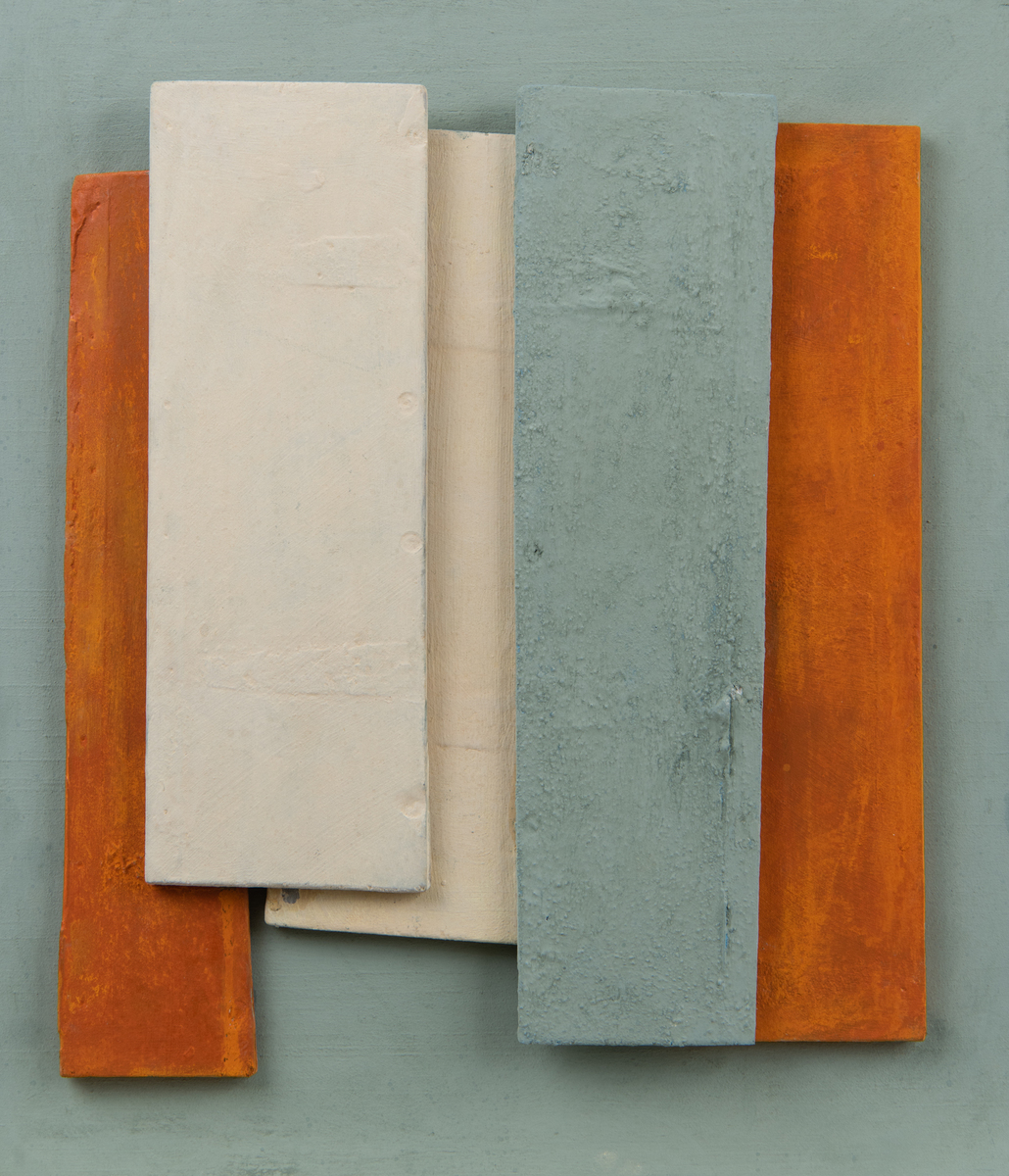RELIEFS
View reliefs catalogue here
Cory Wright constructs the reliefs with individual pastel-coloured wood pieces of varying size, proportion and depth. These works are a spontaneous reaction to the experiences of being in landscape, where the ‘sense’ of a place is made manifest into a physical object.
For some years now I have been working on a series about an estuary where I live in North Norfolk. The fact is that it is no longer an estuary; sea walls. and land reclamation now keep the sea out, so where once the tide slipped in twice a day, there are fields and copses. The evidence of its former medieval heyday however is there to see. The ruins of a friary built in the 13th century still stand on the banks of what once must have been a thriving harbour. It would have been the centre of much trade in an area that was then as busy as anywhere in the country.
This has become the focus of the work and I have been making photographs, drawings and reliefs that allow me to explore the possibilities of what this place might have been.
The Real and The Imagined.
The reliefs are made of individual pastel-coloured wood panels. Where the photographs and watercolours are intended to offer a sense of the landscape as immersive experience, the reliefs are intended to represent landscape, or perhaps 'place' as a physical object. Space made manifest. The camera I use is big, with a 10x8 inch negative and a medium wide-angle lens. It drinks in information, more than even the eye can see.





When I make the applied
work as opposed to the photography, I am interested in how a single gestural line of ink
can convey something that the big camera cannot. It has become clear to me that the success of that line is more
about the nature of its gesture than its ability to visually represent
the landscape itself. It is with this in mind that I can explain the way that
each panel is applied to the final piece; many choices have been made but the
composition is very much the result of moving completed independent elements
within a given frame. This I would say is akin to the notion of gesture in the
drawing.
It is in this way that I find the work sits between abstraction and representation. When I look at them I feel I am seeing an event as landscape in the classic sense. The motifs are all there with fields, trees and water and the composition echoes that of classical painting. However, it is important to see that the relationship between each individual panel is just the beginning of an idea. The starting point was a thought, and because it has barely developed beyond just that, its manifestation is best imagined through the space that it may have occupied… its landscape... its sense of ‘place’.
It is in this way that I find the work sits between abstraction and representation. When I look at them I feel I am seeing an event as landscape in the classic sense. The motifs are all there with fields, trees and water and the composition echoes that of classical painting. However, it is important to see that the relationship between each individual panel is just the beginning of an idea. The starting point was a thought, and because it has barely developed beyond just that, its manifestation is best imagined through the space that it may have occupied… its landscape... its sense of ‘place’.

